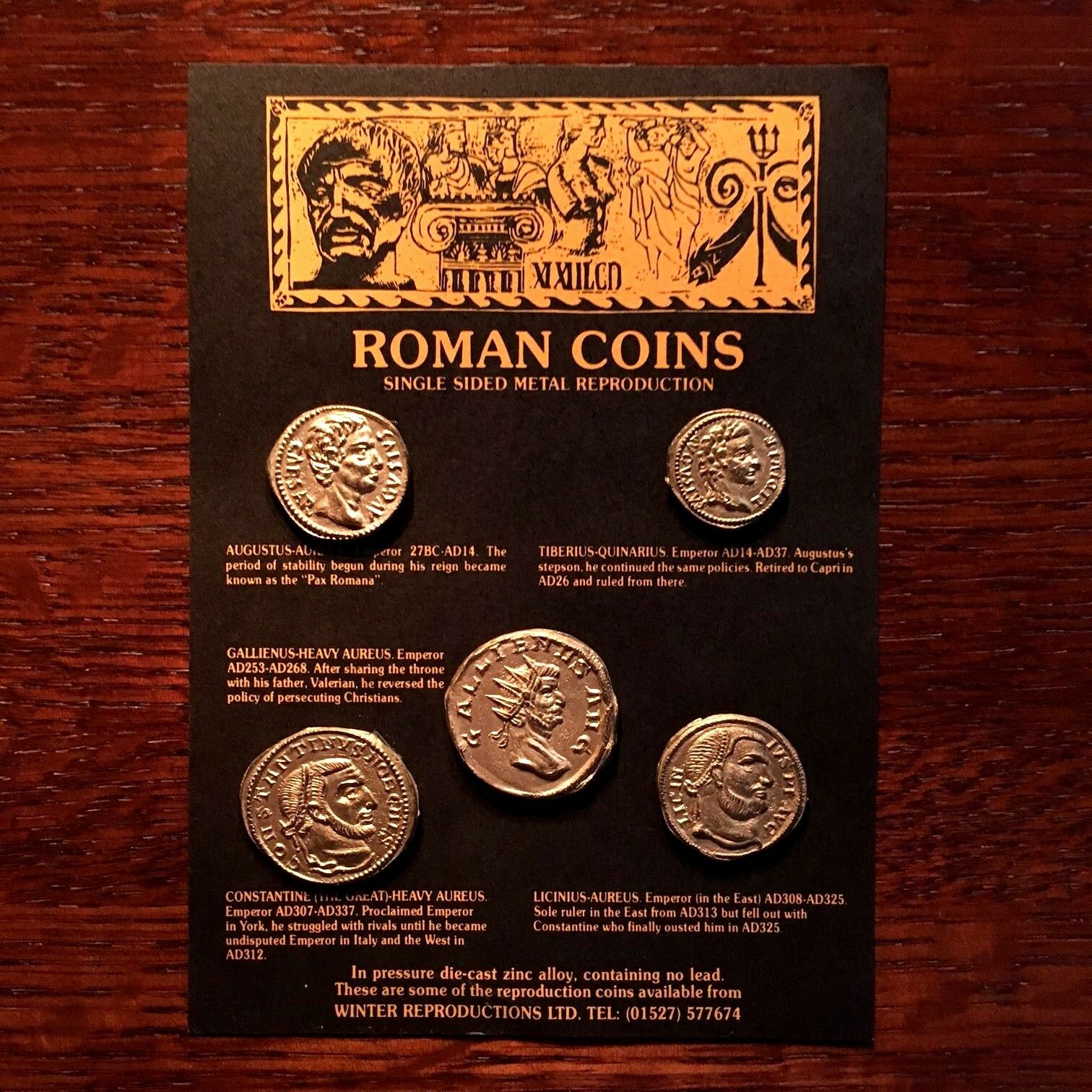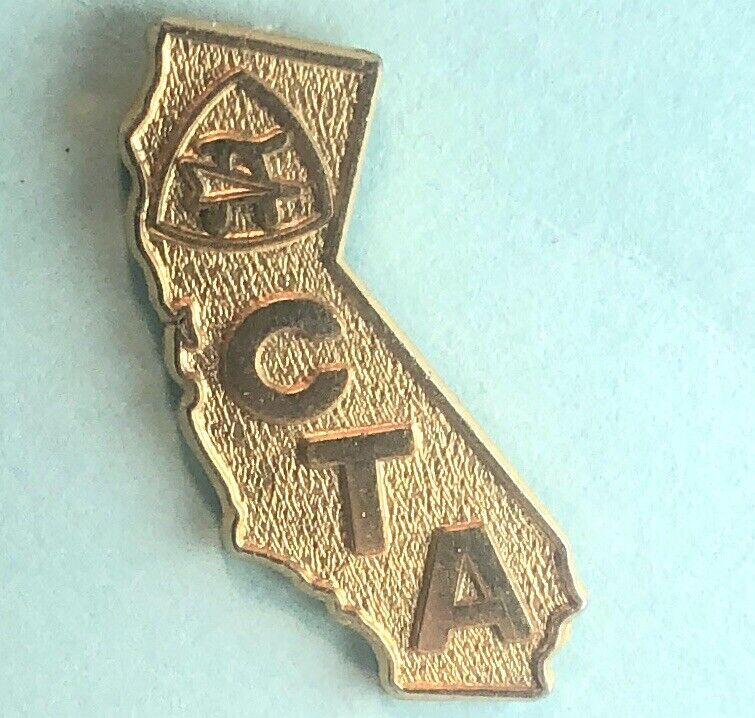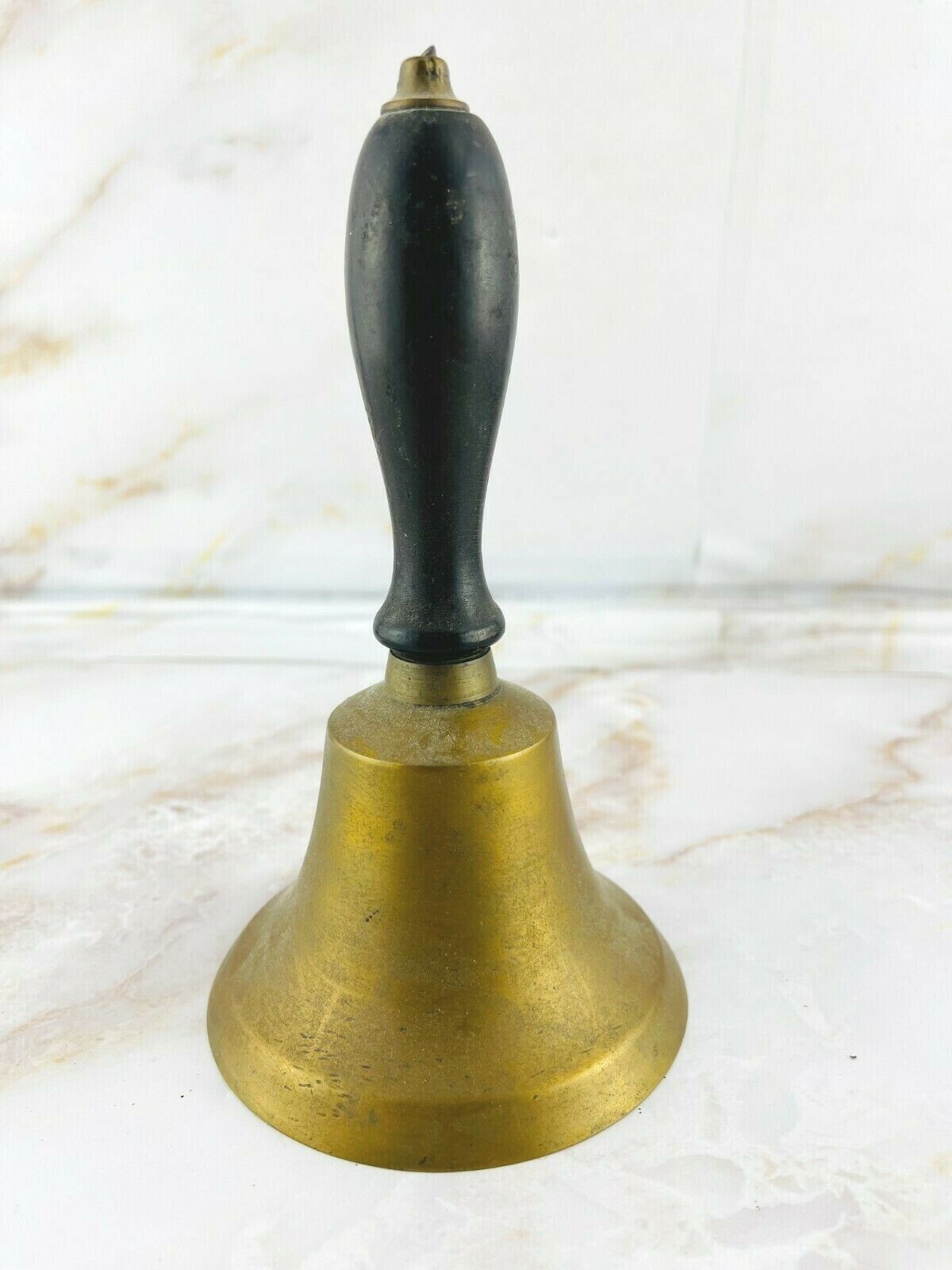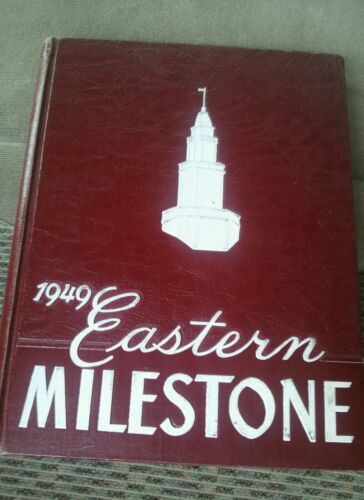-40%
Set of 5 One-Sided Ancient Roman Coin Replicas •Educational Resource• FREE SHIP!
$ 5.25
- Description
- Size Guide
Description
Five Single Sided 17mm - 25mm"Gold" Roman Coin replicas
on a 5½" x 4" Display Card
They can be removed and reattached with removable mounting putty like "Blue Tack".
Each coin has the Emperor's name, title and life span on the reverse.
Each coin representing a Roman Emperor
with a brief description.
Produced by Winter Reproductions LTD
a company long since out of production.
Now the inevitable Wikipedia description...
The
aureus
(pl.
aurei
— "golden") was a gold coin of ancient Rome valued at 25 silver
denarii
. The
aureus
was regularly issued from the 1st century BC to the beginning of the 4th century AD, when it was replaced by the
solidus
. The
aureus
was about the same size as the
denarius
, but heavier due to the higher density of gold (as opposed to that of silver.)
Before the time of Julius Caesar the
aureus
was struck very infrequently, usually to make large payments from captured booty. Caesar struck the coin more frequently and standardized the weight at
{\displaystyle {\tfrac {1}{40}}}
of a Roman pound (about 8 grams). Augustus (r. 29 BC – 9 AD) tariffed the value of the
sestertius
as
{\displaystyle {\tfrac {1}{100}}}
of an
aureus
. The mass of the
aureus
was decreased to
{\displaystyle {\tfrac {1}{45}}}
of a pound (7.3 g) during the reign of Nero (r. 54–68).
After the reign of Marcus Aurelius (r. 161–180) the production of
aurei
decreased, and the weight was further decreased to
{\displaystyle {\tfrac {1}{50}}}
of a pound (6.5 g) by the time of Caracalla (r. 211–217). During the 3rd century, gold pieces were introduced in a variety of fractions and multiples, making it hard to determine the intended denomination of a gold coin.
[
citation needed
]
The
solidus
was first introduced by Diocletian (r. 284–305) around 301 AD, struck at 60 to the Roman pound of pure gold (and thus weighing about 5.5 g each) and with an initial value equal to 1,000
denarii
. However, Diocletian's solidus was struck only in small quantities, and thus had only minimal economic effect.
The solidus was reintroduced by Constantine I (r. 306–337) in 312 AD, permanently replacing the
aureus
as the gold coin of the Roman Empire. The
solidus
was struck at a rate of 72 to a Roman pound of pure gold, each coin weighing twenty-four Greco-Roman carats, or about 4.5 grams of gold per coin. By this time, the solidus was worth 275,000 of the increasingly debased
denarii
.
However, regardless of the
size
or
weight
of the
aureus
, the coin's purity was little affected. Analysis of the Roman
aureus
shows the purity level usually to have been near to 24 carat gold in excess of 99%.
Gold content and price comparison
Name
Gold Content
Julius Caesar Aureus
Julius Caesar Aureus
8.18 grams
1.000
Nero Aureus
7.27 grams
0.889
Caracalla Aureus
6.55 grams
0.800
Diocletian Aureus
5.45 grams
0.667
Constantine Solidus
4.55 grams
0.556
British Sovereign
7.32 grams
0.895
USA Eagle 1837-1933
15.05 grams
1.839
USA Gold Dollar 1849-1889
1.51 grams
0.184
Due to runaway inflation caused by the Roman government issuing base-metal coinage but refusing to accept anything other than silver or gold for tax payments, the value of the gold
aureus
in relation to the
denarius
grew drastically. Inflation was also affected by the systematic debasement of the silver
denarius
, which by the mid-3rd century had practically no silver left in it.
In 301, one gold
aureus
was worth 833⅓ denarii; by 324, the same
aureus
was worth 4,350
denarii
. In 337, after Constantine converted to the
solidus
, one solidus was worth 275,000
denarii
and finally, by 356, one solidus was worth 4,600,000
denarii
.
Today, the
aureus
is highly sought after by collectors because of its purity and value, as well its historical interest. An
aureus
is usually much more expensive than a
denarius
issued by the same emperor. For instance, in one auction, an
aureus
of Trajan(r. 98–117) sold for ,000, and a silver coin of the same emperor sold for 0. Two of the most expensive
aurei
were sold in the same auction in 2008. One
aureus
, issued in 42 BC by Marcus Junius Brutus, the assassin of Gaius Julius Caesar, had a price realized of 1,250.
[1]
(There is an example of this coin on permanent display at the British Museum in London.) The second
aureus
, issued by the emperor Alexander Severus (r. 222–235), has a picture of the Colosseum on the reverse, and had a price realized of 0,000.
FREE SHIPPING!
In The United States
The historical context of coins when they were originally created was the intention that they would be handled and carried by diverse people of different lands and exchanged through out many ages.
This presented an opportunity for ancient people to make a
lasting communication
throughout
their realms with inscriptions on these coins that
expressed
who was in charge and for what reasons
at that very moment of a value exchange
to remind both the purchasers and vendors who has facilitated this exchange through enforced peace and order that must be maintained by Taxs.
Coins were made to be used and part of the fascination with them lies in the human activity that they indicate.
Exhibited in glass boxes can make them little more than pictures of themselves and creates a distance between the viewer and the object that is difficult to overcome.
Placed out of reach makes them boring.
They lose their main purpose and obviously their soul.
Replicas of precious objects can add a layer of reality and information that helps
reconnect
the item to anyone who holds it.
Presenting it with life!
Given the passive nature of museums, which most visitors are accustomed, interacting with the objects
like being able to pick it up and examine an object would generate a more profound connection and
interest
for its history!
[xsellxgallery3]
Click-A-Pic Below to See More of My eBay Items That Ship for FREE!
Set of Three Double-Sided Ancient Greek & Roman Coin Replicas • FREE SHIPPING!
US
.95
4 One-Sided Ancient Greek Coin Replicas - can be used as an Educational Resource
US
.95
Set of 4 One-Sided Ancient Roman Coin Replicas •Educational Resource• FREE SHIP!
US
.95
Set of 5 One-Sided Ancient Roman Coin Replicas •Educational Resource• FREE SHIP!
US
.95









